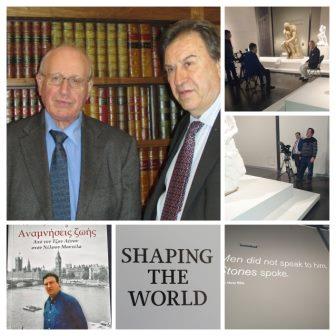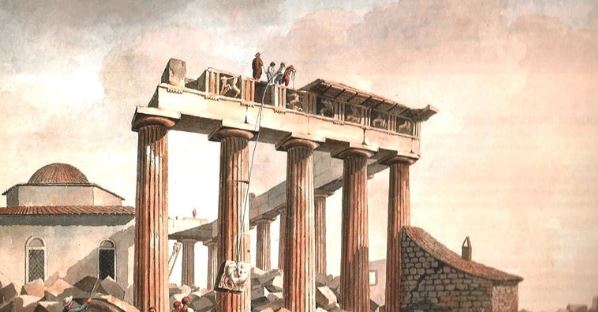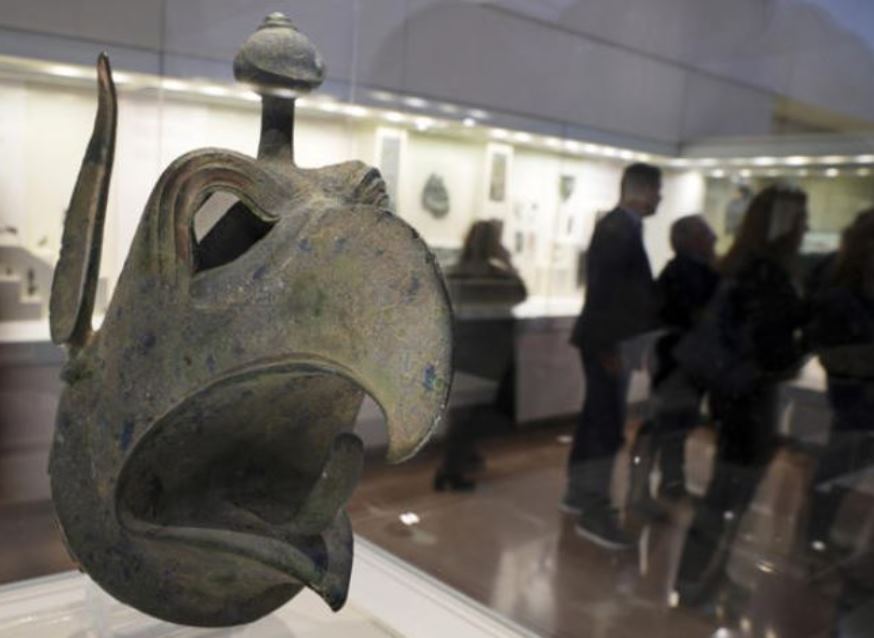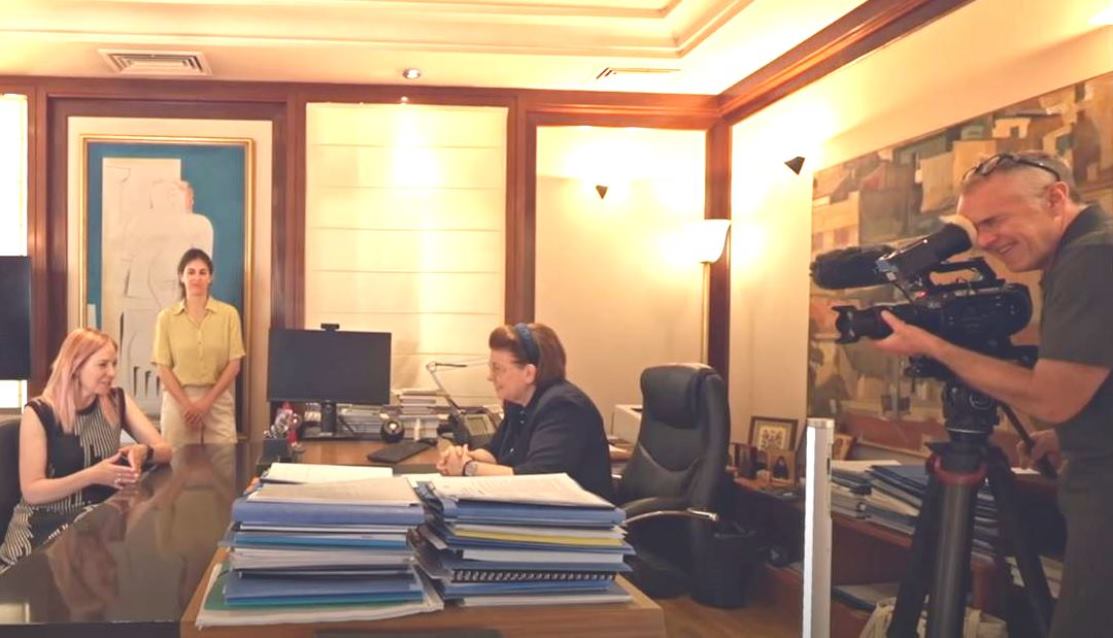Author: Anita Mendiratta, CNN Task Group/eTN
SEEING BEYOND THE SURFACE
They are places that make places make sense. Within their secure walls stand items that act as records of the past. History and culture are held tightly together in cases of glass, collections of frames, and viewing areas sectioned off with velvet ropes. Visitors are invited in and then carefully kept at arms length so as to protect all things precious. Voices are turned down in volume, whispers of conversation filling the air. They are places built for seeing, exploring, learning, and musing. They are museums.
In positions of pride in destinations around the globe are museums. Standing tall in city centers, tucked away in tiny towns, and even carefully moved from location to location through new mobile methods, museums represent homes of history of people, places, and periods of time. Historical jewel boxes of all that a destination holds dear, museums contain pieces of the past that can often not be explained in words – they must be seen and felt to be understood. Whether ancient artifacts or modern pieces of medical marvel, museums are centers of living history.
First established in Rome during the Renaissance, museums only really gained momentum of establishment in the 18th century during the Age of Enlightenment. Inspiring just that, museums offered a structured location for private collections of objects of value and importance that were owned by the wealthy and who wished to share their precious possessions with others through special viewings. The Capitoline Museums, the oldest public collection of art in the world, first opened in 1471 when Pope Sixtus IV donated a group of important ancient sculptures to the people of Rome. In the same spirit, the Vatican Museums, the second oldest museum in the world founded in 1506 by Pope Julius II, invited the public to enjoy a sculptural collection. Inspiration, enlightenment, wealth of possession, and richness of spirit, shared.
Museums have since evolved to become publicly-owned centers of showcase, proudly hosting exhibitions for locals and visitors alike to explore. Times of significance continue to be captured by items of sentiment, status, and specific achievement. Magnifying the meaning of "value," to this day museums continue to act as a record and reflection of what matters to the people of a place. Interestingly, these valued possessions and items may be owned by the destination, or they may be those of interest from destinations abroad, borrowed from other museums for a period of show and tell.
For many visitors to a new place, a museum is a magnet, a "must do" that hits the wish list long before even arriving in the destination. Seen as a promise of an experience of creativity and insight, museums are valued by such travelers for all that they have always been meant to be – a window to a new world. In some cases, the museum has taken on a fashionable appeal in its own right. To visit Paris and not visit the Louvre is simply not to have visited Paris. Likewise MOMA, the Museum of Modern Art in New York City, the Smithsonian in Washington DC, the Tate Modern in London, and the Guggenheim Museums in Bilbao and New York City.
THE CHALLENGE OF THESE TIMES
However, for some travelers the appeal of museums has faded. Despite a museum’s intensity of meaning and ability to mesmerize, for some, sadly, museums are of secondary interest, simply part of the destination offering, competing with other more energized and modern attractions. Their value is determined by the perceived return on a visitor’s investment in time and admission fee. Especially today, in our time and touch-starved world - a place full of old possessions just may not be enough to attract new interest.
Often working against museums is simply their image, particularly for younger generations of travelers drawn to experiences that are more cutting edge than classical. For many travelers, the word "museum" can conjure up dusty, drawn-out images of old buildings full of old stuff. If not enough is known about the museum and all that can be gained by a visit, this presumption of the experience can cause a defusing the desirability of visitors to the destination to venture within to discover something new. In the end, the museum loses a visitor, and the visitor loses out.
There are, however, museums that have recognized a shift in visitor expectation of experience. While staying true to the role of museums in societies, a number of global curators have actively reinvented the museum experience, and even definition. A wonderful example of this is the new Acropolis Museum in Athens. Built in the shadow of the Acropolis, the new Acropolis Museum is a shining example of history and modernity in balance. From the outside, the museum looks like simply a new building, four walls and a roof full of ancient artifacts. One learns very quickly, however, that just as we must never judge a book by its cover, so too must we never judge a museum by its building materials.
The new Acropolis Museum, opened in 2009, does not just build on history, it is built on history. As soon as a visitor walks up the stairs of the museum entrance, the floor beneath their feet opens, through the usage of glass flooring, to reveal an active archaeological excavation site – the ruins of an ancient Athenian neighborhood. This glass floor approach is magnificently carried throughout the museum, with glass floors, staircases and ceilings providing a continuous, three-story showcase of history beautifully integrated with the here and now. Marble statues and artifacts stand gracefully throughout, the only barrier of contact being the natural respect of the viewer. Restoration work of priceless Athenian artifacts is not sent off-site. Instead a laser-based restoration facility positioned centrally in the open museum area allows visitors to see the painstaking, high-tech process that is releasing the goddess within from layers of time which have masked her beauty. To interact with a museum’s rich collection does not require touch screens, it requires touching people’s hearts and imaginations. This is "interactive" at its very best.
Adding excitement, the actual architecture of museums is becoming as important and interesting as the artifacts within. The new Acropolis Museum stands beneath the Acropolis not simply for the purpose of proximity. Its design is, in fact, far more purposeful. Flooded by natural light, from all sides of the Acropolis Museum the actual Acropolis is visible, enabling visitors to enjoy the ancient artifacts within the museum while effortlessly looking up to see their original home. The top floor of the museum, a glass rectangular box which stands majestically as the Parthenon Gallery graced by sculptures and reliefs that once decorated the Parthenon, is designed at the exact angle of the Parthenon, mirroring its muse.
Similarly, the magnificent J. Paul Getty Museum in California is celebrated for its exceptional collections, along with its breathtaking views across Los Angeles – both those from the museum, and of the museum.
FROM PASSION TO PROTECTION
With their unique designs and breathtaking collections, what is even more striking about the museums is the incredible pride that can be felt by the people who see it as a symbol and celebration of their home. Whether a museum tour guide storytelling their way through displays, or a resident talking over a restaurant table about their favorite collections, there is an awe in their sharing. Museums matter. And even though the busyness of daily life may mean that residents may only be able to visit their museums when visitors are in town, a strong sense of "ours" still exists. Whether it is centuries of collectables, decades of dust, or recently-placed reminders of milestones, the contents of a museum are held dear. For travelers, this pride can richly enhance the impression of the destination, giving a place substance, stories, soul, and spirit.
The importance of museums to the people of a destination was dramatically on display in the early days of 2011. The Egyptian National Museum of Antiquities in Cairo, world renowned for its exceptional collection of over 120,000 ancient Egyptian treasures, has always been a must-see for visitors to what remains one of the world’s most enthralling destinations. When anti-government protestors and pro-government supporters clashed in Tahrir Square, just steps away from the museum’s entrance, the museum was faced with the very real risk of damage. At its climax, anti-government protesters fighting to protect their cause, came together to also protect their heritage, forming a human chain outside the 108-year-old museum to protect it from other invaders. A display of incredible passion and purpose, the scene penetrated the hearts of all onlookers, be they on the streets of Cairo or watching the drama unfold on their televisions and computer screens around the world. As stated by Zahi Hawass, Egypt's chief archeologist: "They know this is their cultural heritage. If the museum is safe, Egypt is safe."
BLOWING THE DUST OFF
The old adage remains true, for people and places: where we have come from forms the foundation of where we are going. For any destination seeking to make a meaningful connection with travelers, museums offer invaluable platforms for visitor understanding, appreciation, and excitement – past and present. However, for museums to become a part of local pride, visitor interest and enduring importance, they need to be protected, preserved, celebrated, and shared with as much care and passion as their possessions. To stand as relics of the past is to deprive their value of oxygen in the present.
The opportunity for any destination lies in travelers and residents feeling a sense of "must see them" whenever hearing the word "museum."





